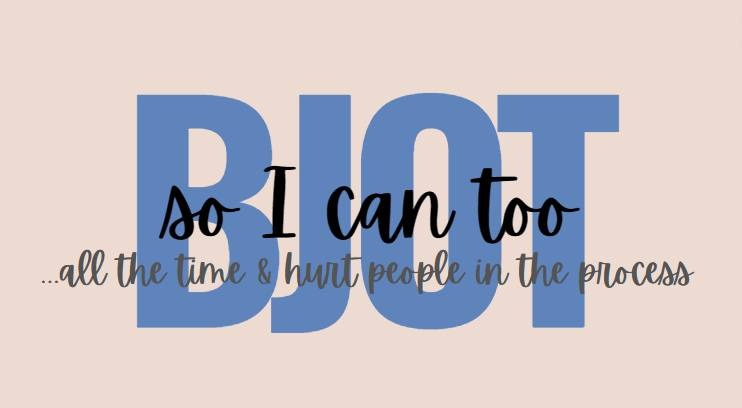
Which Way Modern Man? No, for Real.
If you have never seen one of the “Which Way Western Man?”(WWWM?) memes, here’s a quick summary. A split-screen graphic shows something “traditional” on the left and something stereotypically newfangled on the right. Sometimes it is innocent and somewhat thought-provoking, like pitting a beautiful old stone church against a modern strip-mall church. Sometimes it is more intentionally provocative, like showing a large family on a homestead where the hardworking muscledad plays with the kids while the housewife-in-the-housedress pets her sourdough loaf. This scene is naturally contrasted with a blue-haired couple binge-watching propaganda with their three cats while sitting in a yoga pose on their rainbow-flag bed sheets. Of course, this latter example is meant to incite a strong reaction from every side more than initiate a healthy constructive discussion.
As I’ve been reading the crucifixion accounts this week in preparation for Resurrection Day or Pascha (yes, Easter), I was confronted by a couple of inescapable “WWWMs?” I want to look at one in particular. And, yes, my goal here is to incite– and invite– you into a constructive conversation.
So, Western Man (and woman), here is your fork in the road. You’re standing before two prison cells. The first cell holds a man called Jesus Barabbas (Matthew 27:16; note: some translations exclude his first name). As Luke 23:19 says, this particular Jesus “was in prison for taking part in an insurrection in Jerusalem against the government, and for murder.” He was a well-known revolutionary who used violence as a means to his end, someone who would wake up on the Che-Guevara side of the bed to slide into his G.I. Joe slippers.
The second prison cell holds a man named Jesus Bar Joseph. This man was also charged with a type of insurrection against the government. However, his charges do not stem from any acts of violence against the government but rather a failure to deny a singular claim that he was “King of the Jews”. He stirred up trouble not with force or violence but with barbed words of Truth and, often, when it came time to speak truth to power– cold subversive silence.
So, before us are two prison cells, two Jesuses and two very different paths. And whenever we are provoked in this ever-provocative world, we open one of these two cells and embody the truth of the man who walks out. Ask yourself this: when the temperature rises in the room, which Jesus comes out of your mouth, out of your hands, out of your pores? Is it the one ready to shed the blood of another or the one ready to shed his own blood for the love of another? Is it the brut-i-form Jesus or the cruciform Jesus? The psychotic Jesus or the kenotic (self-giving) Jesus?
The mob that day chose to release Jesus Barabbas and kill Jesus Bar Joseph. Though, the deeper revelation for us is that the latter Jesus, the one with the power to call down all the angel armies, chose not to press the red button. He chose to remain incarcerated. He chose to remain silent. And, in doing so, He allowed the cell of Barabbas to swing wide, so that He could, in His time and in His way, open another door-- the one that could lead to the total and eternal freedom of Barabbas (and all of us).
This is what Love does. It is powerful enough to restrain itself long enough to free another. Humble enough to empty itself so that another could be filled up. Selfless enough to give up its life for another. Even when the “other” earned the punishment that was coming to him.
So, Which Way Western Man? Since “Jesus” (Yeshua) means “God saves”, we must ask ourselves which god we summon when trouble comes knocking? Do we call on the psyche of Jesus Barabbas or Jesus the Christ?
Let me tell you how the story ends, in case that is helpful in your decision. In Revelation, there are several riders on horses, each symbolizing something different. Let’s contrast two riders in particular, the one on the Red Horse in Revelation 6 and the one called Faithful and True, riding a White Horse in Revelation 19. They both are said to wage a war. There’s a stark difference, though.
The rider on the red horse is a revolutionary who wields the sword in hand and “makes men kill one another”. The rider called Faithful and True has a sword, as well, but it proceeds not from his fingertips but from his mouth… because He is the faithful “Word of God” whose weapon is Truth, spoken and lived. His robe is already stained with blood before the final battle has even begun. It is not stained with the blood of his enemies, though, but his own blood he shed FOR his enemies. The army following Faithful and True is dressed in pure white with no stains of blood. Their part in the war is simply to put down their own swords and follow the True Revolutionary-- the One who wasn’t afraid to get his Good Friday outfit stained in his own blood to rescue the ones who caused the blood to flow.
That’s what this Easter weekend is about.
0 Comments Add a Comment?